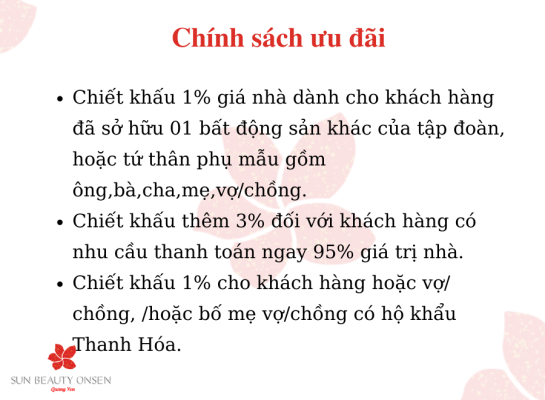- Shifting Tides: Current affairs, tech breakthroughs, and the evolving landscape of global news.
- The Evolving Media Landscape
- The Impact of Social Media
- Technological Breakthroughs and the Future of Journalism
- The Rise of Data Journalism
- The Global Impact and Challenges of Information Access
- The Role of Citizen Journalism
- Navigating the Information Age
Shifting Tides: Current affairs, tech breakthroughs, and the evolving landscape of global news.
In today’s rapidly evolving world, staying informed is more critical than ever. The constant stream of information, often referred to as the flow of news, impacts our decisions, shapes our understanding of global events, and influences the very fabric of our societies. However, the landscape of how we consume and interpret this information is undergoing a dramatic transformation. Technological advancements, coupled with shifting public trust in traditional media outlets, are creating both opportunities and challenges for discerning audiences. This article delves into the changing tides of current affairs, technological breakthroughs influencing information dissemination, and the broader implications for the future of global awareness.
The modern era is characterized by an unprecedented access to information. Where once access was limited to a handful of newspapers, radio broadcasts, and television channels, today anyone with an internet connection can access a multitude of perspectives and sources. But this abundance of choice also presents a critical challenge: separating credible information from misinformation, and navigating the increasingly complex world of online content. Understanding these dynamics is fundamental to informed citizenship and responsible engagement with the world around us.
The Evolving Media Landscape
The traditional media model, once dominated by established news organizations, is now facing substantial disruption. Declining readership and viewership have forced many publications and broadcasters to adapt, finding new ways to monetize their content and reach audiences. This has led to the rise of digital subscriptions, paywalls, and a greater reliance on social media platforms for distribution. However, this shift has also contributed to the spread of filter bubbles and echo chambers, where individuals are primarily exposed to information that confirms their existing beliefs, hindering the possibility of balanced and critical thinking.
| Newspapers | Advertising, Subscriptions | Declining Readership, Digital Competition | Digital Subscriptions, Online Advertising, Content Diversification |
| Television News | Advertising | Changing Viewing Habits, Cord-Cutting | Streaming Services, Online Video Platforms, Digital News Sites |
| Radio News | Advertising | Competition from Podcasts, Streaming | Digital Streaming, Podcast Creation, Localized Content |
The Impact of Social Media
Social media platforms have become powerful forces in the dissemination of information, acting as both a source of news and a gateway to other sources. While these platforms can facilitate rapid communication and citizen journalism, they also present significant risks. Algorithmic curation often prioritizes engagement over accuracy, leading to the amplification of sensational or misleading content. The spread of fake news and disinformation on social media has become a major concern, undermining public trust and potentially influencing democratic processes. Moreover, the anonymity afforded by these platforms can foster a toxic environment of online harassment and polarization.
Addressing these challenges requires a multi-faceted approach, involving media literacy education, fact-checking initiatives, and greater transparency from social media companies themselves. Individuals must be equipped with the critical thinking skills to evaluate the credibility of sources and identify potential biases. Simultaneously, platform providers need to take responsibility for the content shared on their sites, implementing effective measures to combat misinformation and promote high-quality journalism.
Technological Breakthroughs and the Future of Journalism
Technological advancements are not only disrupting the media landscape but also offering exciting new opportunities for innovation in journalism. Artificial intelligence (AI) is being used to automate tasks such as fact-checking, transcription, and data analysis, freeing up journalists to focus on more complex and nuanced reporting. Machine learning algorithms can also personalize news feeds and recommendations, delivering content tailored to individual interests. However, the ethical implications of AI in journalism must carefully considered, ensuring that algorithms are transparent, unbiased, and do not perpetuate existing inequalities.
- AI-Powered Fact-Checking: Automating the verification of information to combat disinformation.
- Personalized News Delivery: Tailoring content to individual interests and preferences.
- Data Journalism: Using data analysis to uncover insights and tell compelling stories.
- Virtual and Augmented Reality: Creating immersive news experiences that transport viewers to the scene of events.
The Rise of Data Journalism
Data journalism has emerged as a powerful tool for investigative reporting, enabling journalists to analyze large datasets and uncover hidden patterns and trends. By combining data analysis skills with traditional journalistic techniques, data journalists can reveal corruption, expose wrongdoing, and hold powerful institutions accountable. This approach requires a high level of technical expertise, but the potential rewards are significant. Furthermore, visualizing data through compelling charts and graphics can make complex information more accessible and engaging for the public.
The increasing availability of open data initiatives, coupled with the development of sophisticated data analysis tools, is fueling the growth of data journalism. However, it is essential to ensure that data is collected and analyzed ethically, protecting privacy and avoiding unintended consequences. The challenge lies in striking a balance between transparency and responsible data handling.
The Global Impact and Challenges of Information Access
While many parts of the world enjoy relatively easy access to information, significant disparities remain. Digital divides, censorship, and government control of media continue to limit access to news and information for millions of people. In authoritarian regimes, independent journalism is often suppressed, and journalists face harassment, imprisonment, or even death. Protecting press freedom and ensuring access to information are fundamental human rights, crucial for fostering democratic governance and citizen engagement.
- Digital Divide: Unequal access to the internet and digital technologies based on socioeconomic factors.
- Censorship: Government restrictions on freedom of expression and access to information.
- Disinformation Campaigns: Deliberate attempts to spread false or misleading information to manipulate public opinion.
- Attacks on Journalists: Threats, harassment, and violence against journalists seeking to report the truth.
The Role of Citizen Journalism
The rise of citizen journalism, where ordinary individuals contribute to the production and dissemination of news, is challenging the traditional gatekeeping role of established media outlets. Smartphones and social media platforms have empowered citizens to capture and share firsthand accounts of events, providing alternative perspectives and filling gaps in conventional coverage. However, citizen journalism also presents challenges. The lack of professional training and editorial oversight can lead to inaccuracies, biases, and the spread of misinformation.
Developing guidelines and best practices for citizen journalism is essential, ensuring that contributors adhere to ethical standards and verify information before sharing it. Collaboration between professional journalists and citizen reporters can harness the power of collective intelligence, providing more comprehensive and accurate coverage of events. The future of journalism will likely involve a blurring of boundaries between professional and citizen reporters.
Navigating the Information Age
The current information landscape demands a critical and discerning approach to consuming news and information. Developing media literacy skills, verifying sources, and seeking out diverse perspectives are essential for making informed decisions. It’s important to recognize that no single source is infallible, and a healthy skepticism is warranted when encountering information online. Furthermore, supporting independent journalism and advocating for press freedom are crucial steps in preserving a healthy and vibrant public sphere.
| Source Verification | Evaluating the credibility and reliability of information sources. | FactCheck.org, Snopes.com, PolitiFact.com |
| Media Literacy | Understanding how media messages are constructed and the biases they may contain. | Center for Media Literacy, News Literacy Project |
| Critical Thinking | Analyzing information objectively and assessing its validity. | Foundation for Critical Thinking |



























